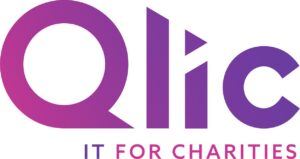Charity cyber security is a particularly pressing issue these days. Cybercriminals have realised that charities are particularly attractive targets due to the volume of financial information they are processing online from their donors. In addition, charities are less likely to have good cyber security due to their lack of resources and funding for technology.
However, it is important for charities to implement best practices to protect themselves from cyber attacks because of the amount of sensitive data they are responsible for handling.
In this blog post, we’ll explore best practices for reducing the risk of cyber-attacks and navigating the response to cyber threats at your not-for-profit.
Best Practices for Charity Cyber Security
- Staff training about cyber attacks
- Secure software for your nonprofit organisation
- Password protection for sensitive data
- Manage credentials to limit the risk of data breaches
- Data backup protocol in response to cyber threats
Let’s explore these further to learn about how your charity can take a proactive approach to cyber security, protect itself from cyber threats and increase data security.
1. Staff training about cyber attacks
One of the most crucial aspects of charity cyber security is staff training. Employees are on the front lines when it comes to protecting your organisation’s sensitive data. Staff training about cyber attacks is essential because it ensures that everyone in the organisation is aware of the risks and knows how to spot potential security threats.
To train staff on charity cyber attacks, begin by assessing their current knowledge of cyber security. This can be done through surveys or assessments. Once you have identified areas where your staff may need additional training, develop a comprehensive training program that covers the basics of cyber attacks, including common threats like phishing scams and malware. The training should also cover how to identify and report potential attacks, how to respond to a security incident, and best practices for cyber security. There are also free cyber security training resources online which you can implement into the training. The National Cyber Security Centre (NCSC) is a great resource to help you get started.
It’s important to make sure that the training is ongoing and updated regularly to keep staff informed about the latest threats and best practices. Encourage employees to report any suspected incidents, and make sure that they know who to contact if they come across something suspicious. By educating and training staff on cyber security best practices, charities can help reduce the risk of a cyber attack and protect their sensitive data.
Staff training should also include training in the most effective use of advanced security solutions like Microsoft 365 Advanced Threat Protection and features such as Domain Impersonation Protection. These solutions are particularly effective against common types of cyber attacks, such as charity phishing scams. If organisations have not yet adopted such cybersecurity software and solutions, it is recommended that they do so.

2. Secure software for your nonprofit organisation
Endpoint security solutions such as Microsoft Defender for 365, are a great place to start to secure your charity’s software. They work to protect individual devices such as laptops, computers and mobile devices connected to an organisation’s network from cyber attacks. Endpoint security solutions ensure that endpoint devices remain protected, no matter their location or how they connect to the network.
Be sure to keep all software up to date with the latest security patches and updates. Hackers often exploit known vulnerabilities in outdated software, so staying up-to-date is crucial. It’s also important to make sure that all software is licensed properly and that your organisation is not using pirated software. This can leave your organisation open to legal repercussions and security threats.
Also, work with vendors and service providers to ensure that they are following industry best practices when it comes to security. Ask about their security protocols and make sure they have measures in place to protect your charity’s personal data.
Making sure your charity’s software is secure will help to instil trust with donors, volunteers, and other stakeholders. It will also ensure that the organisation can continue to fulfil its mission without interruption.
3. Password protection for sensitive data
Password protection is an essential component of charity cyber security, especially when it comes to protecting charity sensitive data. Passwords are commonly used to authenticate the identity of users and grant access to their accounts or devices. Implementing password protection measures can help charities to ensure that only authorised individuals can access sensitive data.
There is quite a lot of password protection software out there to help keep your password unknown and protected. The first is Multi-Factor Authentication (MFA). This adds an extra layer of security to the traditional method of using a single password for authentication. By requiring multiple forms of authentication, it decreases the likelihood of unauthorised access to personal data, even if a user’s password is compromised.
Find more information on how to set up MFA on our blog Staying Secure with Multi-Factor Authentication.
The next software available to charities is password managers. This helps staff and volunteers to generate, store and manage complex and unique passwords for various online accounts. A password manager can also assist in filling in login credentials and forms automatically. Password managers work by creating a unique and strong password for each charity user’s account, storing them securely behind a master password. The NCSC recommends using “three random words” to create passwords, this is an example of a password-creation technique where a user combines three random words to create a strong and complex password. This technique is useful because it creates a password that is both strong and easy to remember.
Charity staff should use a combination of upper and lowercase letters, symbols, and numbers to create a strong password. It is considered best practice to update your password regularly to maintain a good level of security. It’s also important to ensure that sensitive data is only accessible by those who need to access it, and that a clear password policy is in place for staff and volunteers to follow.

4. Manage credentials to limit the risk of data breaches
Managing credentials is a fundamental aspect of charity cyber security. This refers to the practice of limiting access to sensitive data to authorised staff or volunteers through a systematic approach that ensures that only the right people can access it. Managing admin access prevents staff or volunteers from downloading and installing third-party software on their devices that have not passed a safety audit and may compromise security.
This is usually reserved for top technical level only as they have access to login details, account creation and software installation. Managing credentials is crucial because it helps to limit the risk of data breaches by reducing the likelihood of unauthorised access to sensitive data.
Good credential management practices offer data protection by ensuring that only authorised charity staff can access it. This limits the damage that can be caused by a breach. In addition, it can help reduce the potential for harm to your organisation’s reputation and loss of resources due to litigation or fines.
5. Data backup protocol in response to cyber threats
A data backup protocol is a plan for regularly backing up important and sensitive data to a secure location. It is critical because it helps to ensure that, in the event of a data breach or cyber attack, sensitive information held by your charity organisation can be recovered and restored.
To develop a data backup protocol, charities need to identify which data is critical, how frequently it needs to be backed up, and where it will be stored. There are various methods of storing data backups, including physical backup media like external hard drives, cloud storage, or hybrid approaches that combine both methods.
Having a cyber attack procedure in place can help your organisation to prepare a strategy for what to do if a cyber attack were to take place. This could include disconnecting the charity from the network so that the breach is contained, putting staff and volunteer devices into hibernation mode to limit the damage a ransomware attack can do, changing all account and cloud service passwords in case any have been compromised, seeking expert help to assess what happened and what effect it has had on the organisation.
To gain more valuable insights into common security challenges that charities face, and discover innovative solutions to fortify your defences, check out our webinar “Defending the Mission: A Comprehensive Guide to Charity Cyber Security”.
Final Thoughts on Charity Cyber Security Best Practices
Cyber security is a critical concern for all organisations, but it’s especially important for charities. This field is constantly changing and nonprofits must adapt to keep up with the latest cybersecurity trends in order to navigate these challenges effectively.
Even if resources are limited, there are grants for cyber security for charities available to help. Fortunately, charities can use best practices to protect themselves from cyber threats. By focusing on the five best practices for charity cyber security – staff training, managing credentials, password protection, secure software and data backup – charities can put in place effective measures to keep their sensitive data secure and reduce the risk of cyber attacks. With these steps in place, and by following our Top 5 Data Protection Guidelines for Charities, nonprofits can continue their critical work with confidence, knowing that their cyber security program is effective and up-to-date.
Would you like to improve your charity’s current cyber security landscape? Book a free cyber security consultation with our IT experts at Qlic.






